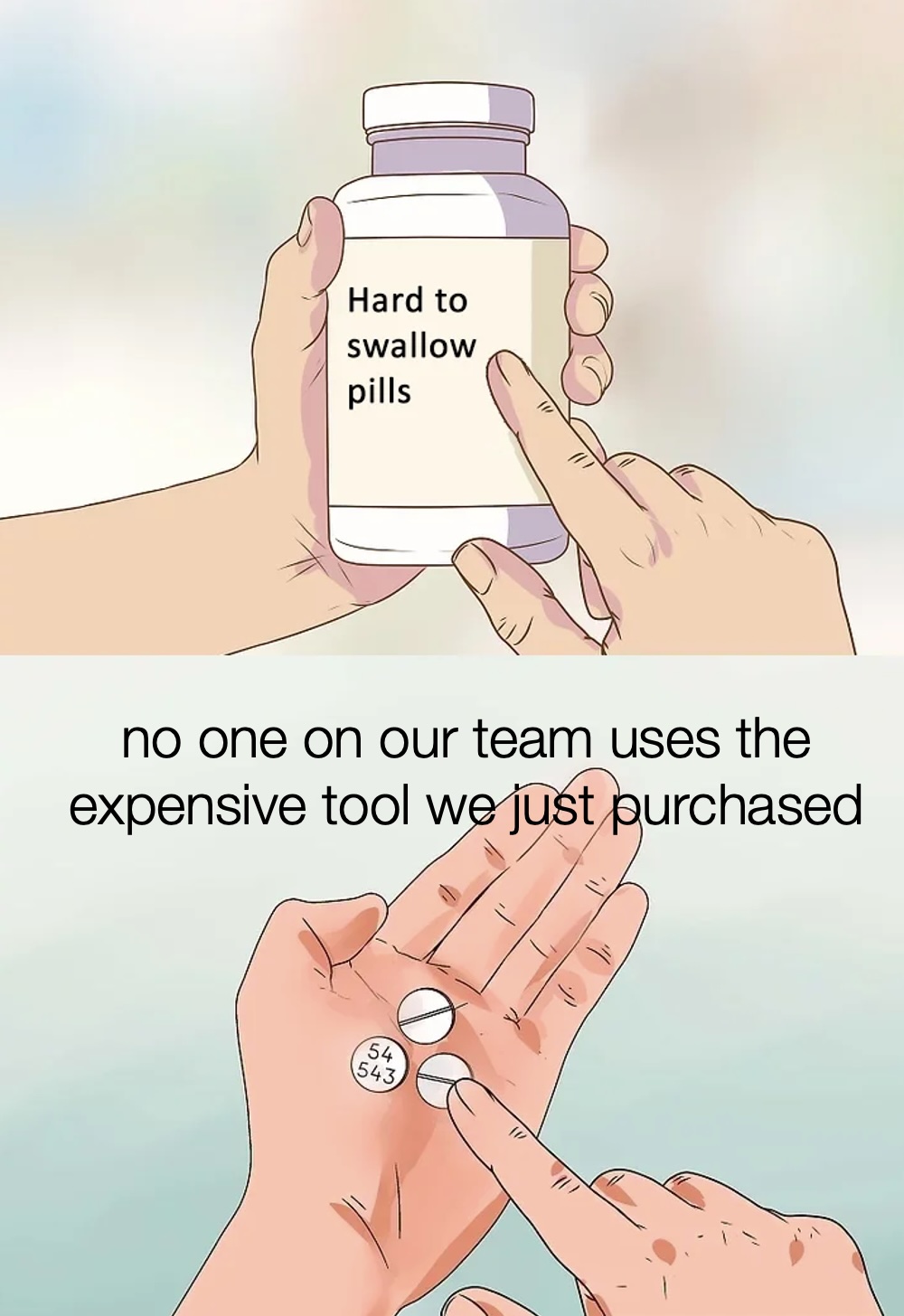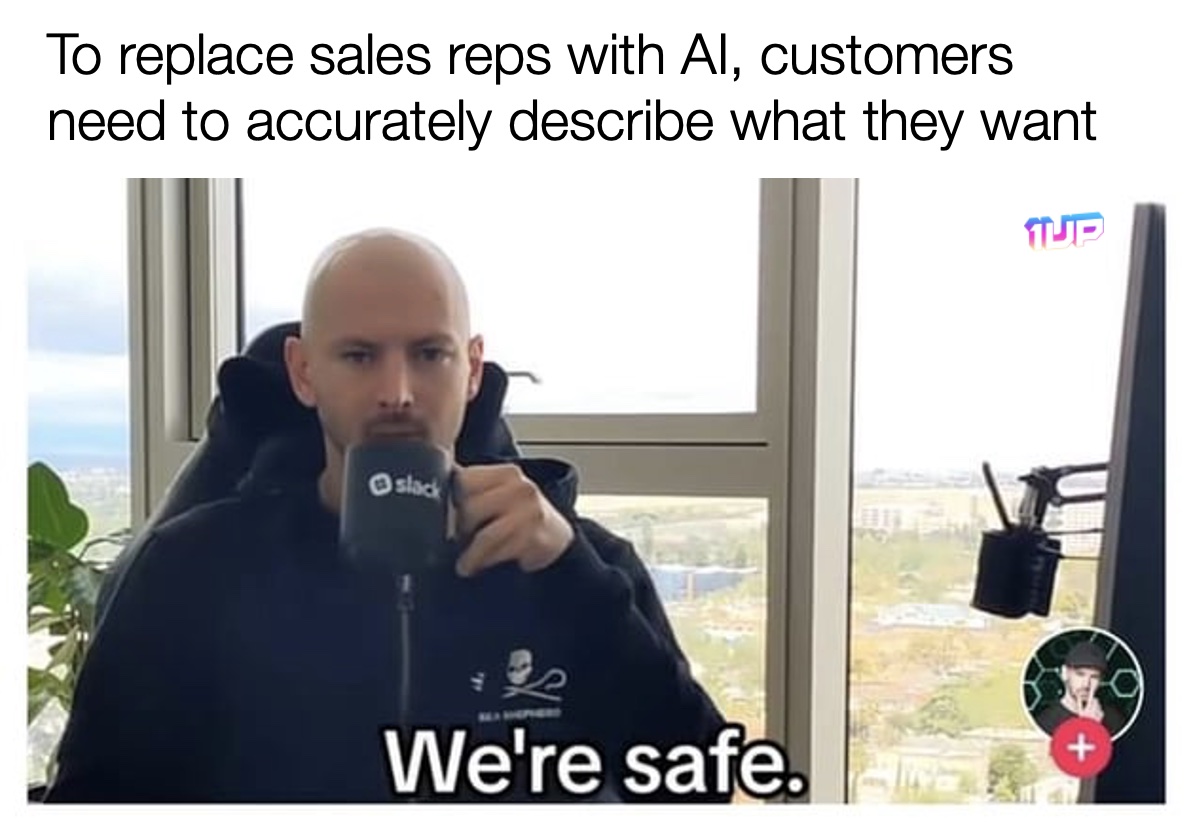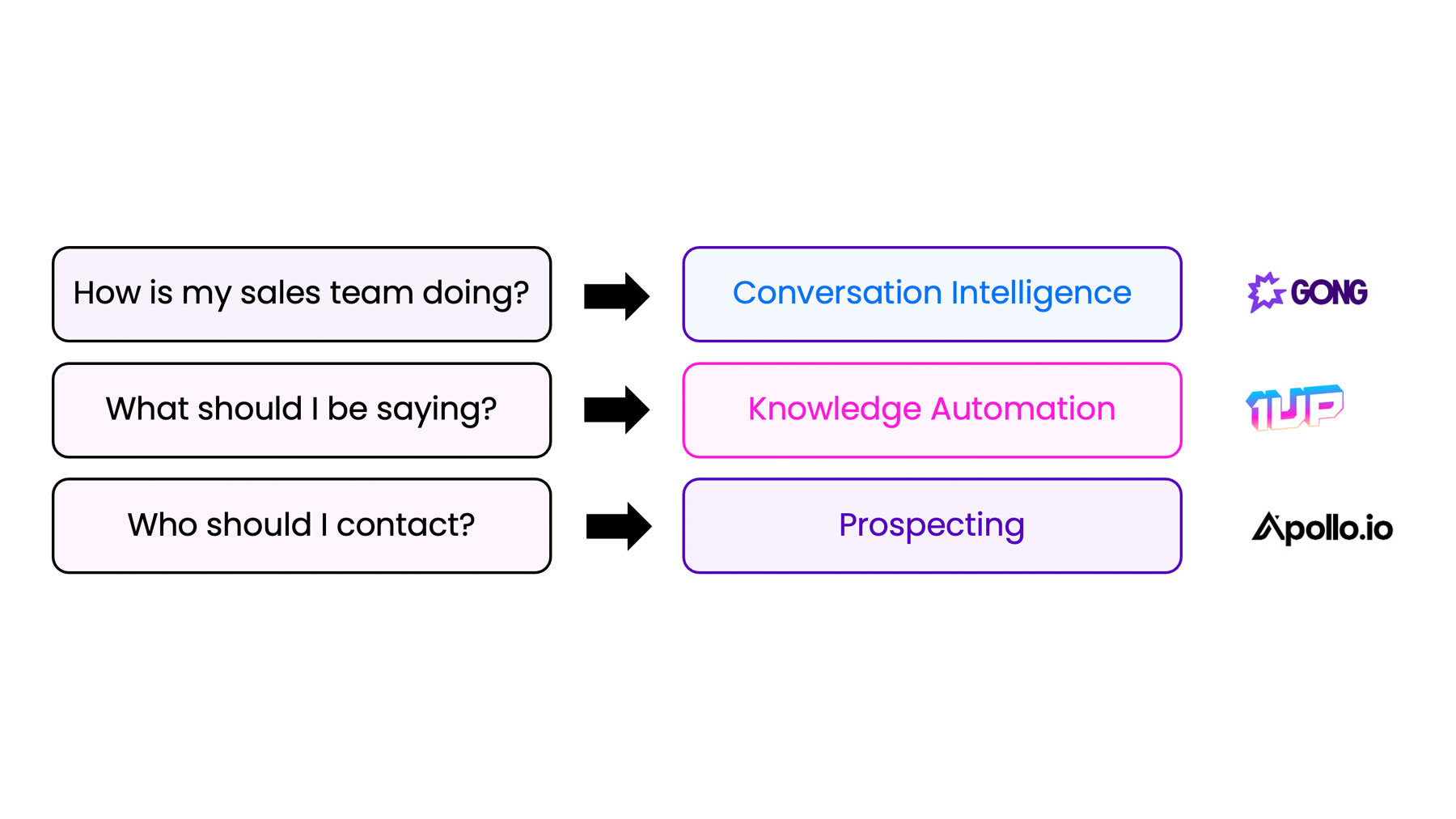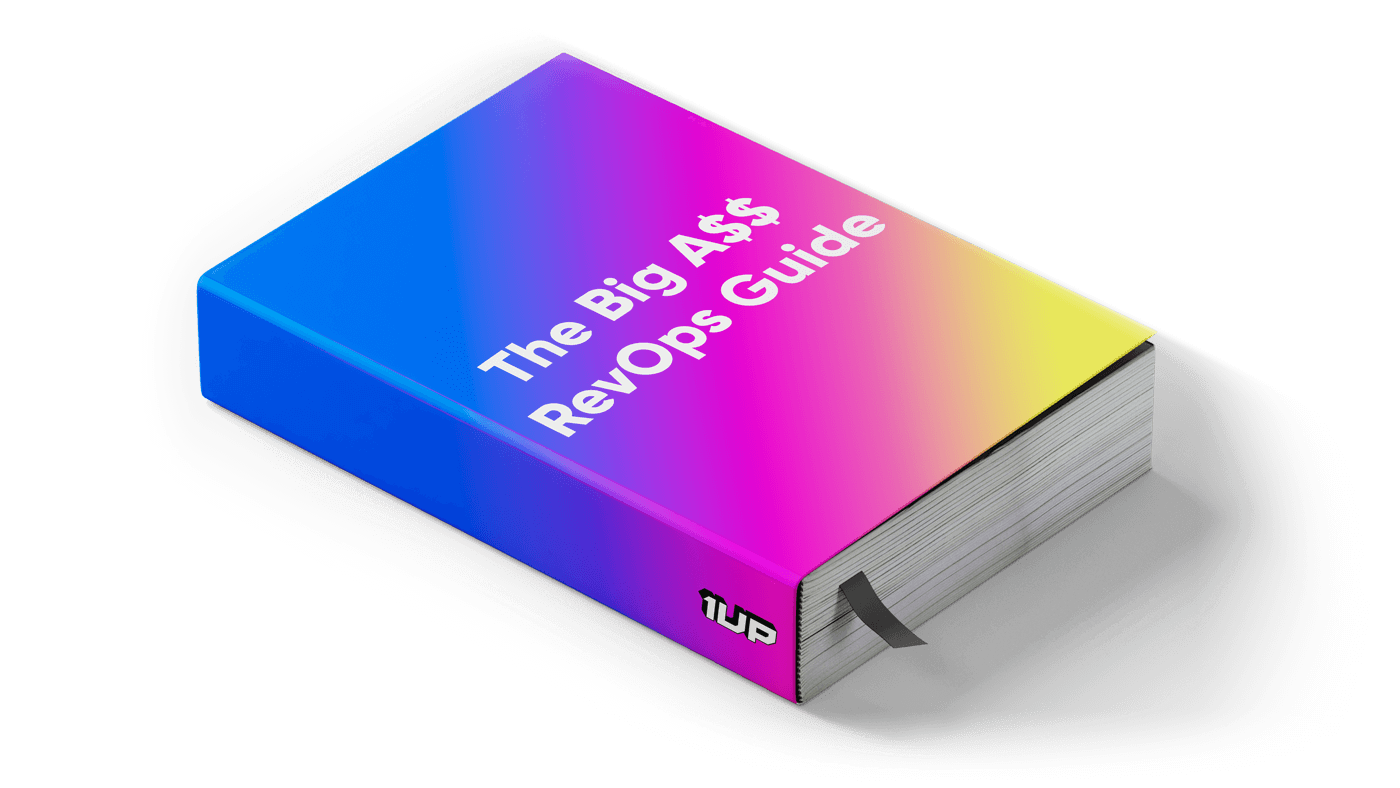4 Reasons Why Sales AI Still Misses the Mark
Do you work on a Go-to-Market team? Chances are you’ve been pitched dozens of sales AI tools over the past couple of years.
You may have even considered buying some of those products.
You’re not alone. There’s no shortage of shiny new toys in this industry. But when speaking with practitioners, we find that many of their favorite products don’t make it past the demo stage. In fact most AI tools will shut down before they see mass adoption. Why is that?
There is a ton of innovation happening in this space. But there’s also plenty of buyer’s remorse and skepticism – especially around AI products built for sales teams. In our conversations with sales leaders, we’re seeing levels of disappointment not witnessed since the Blockchain hype cycle.
Now that the initial AI hype has tapered off, what truths can we glean about AI in sales?
1. Most tools don’t really help you sell anything
A great sales rep can do the job without the best tooling. But a weak sales operation will not be improved by software.
The reality is that most sales software does not help you sell more product. More and more AI co-pilots claim they can make selling easier, but the messaging doesn’t often align with the solution being delivered.
Instead, these tools help more with improving productivity than they do with convincing buyers to give you money.
It’s like a fitness tracker app that tells you it’s a weight-loss product. The app doesn’t actually cause you to lose weight, but it can help you better manage the process and progress of getting fit.
There are some phenomenal process automation tools that marketing teams use each day. AI products built for the sales org would do well to align their messaging more closely with productivity gains and process management.
AJ Aminrazavi, Account Executive, Thoropass There’s misalignment with many of the AI sales tools out there. They’re just not built for us front line sales reps. The last thing most reps want is another distraction that takes away from our ‘bread and butter’ – closing deals. An AI bot that pops up mid-demo while I’m trying to close a tough prospect to tell me the prospect doesn’t seem “engaged” is just going to derail the process, not help me close the deal.
2. The tool was made for your executives, not you
Some products exist purely to check a box. Others are purchased out of convenience rather than necessity. And some products never even get adopted. We used to call them “shelfware.”
Today, we just call them AI.

And we’re not talking about tools with bottoms-up adoption like ChatGPT.
The problem here is software targeting the GTM org often requires an aggressive top-down sales motion. That means the marketing, messaging, and sales tactics focus on driving persuasion at the leadership level rather than building consensus and adoption among the broader user base.
This approach can pressure executives buying tools that their team may not really want or need. Sometimes, innovative products are bought just to make use of a budget the company has already allocated.
No matter what, the tool will inevitably make its way to the end users. That’s where the disappointment sets in 😞
To avoid this happening, products should focus on driving value and consensus at the user level rather than focusing on decision-makers. Adopting a product-led growth model would likely improve the whole experience of deploying AI sales tooling, and consequently reduce churn in the long run.
TLDR: Get the sales org adopting it before you go pitching leadership over a steak dinner.
Turn your sales reps into product experts with 1up
Yes, we’re pitching our Sales AI tool in the middle of a blog post about Sales AI tools.
3. Complex learning curves
Reps want to sell, not sit through training for new software tools every other week.
If you’ve ever worked in a sales org, you know just how much training there is. New tools, processes, optimizations, product updates – the constant barrage of new information. There are trainings on sales hygiene and note-taking. There are even trainings on how to run trainings.
There’s an entire industry of sales memes about putting notes in Salesforce.

There’s also a misconception that sales teams are unwilling to learn and adopt new software. That sounds like a coping mechanism for vendors who are unable to drive adoption.
Sales teams are overwhelmed with information on new products. Consider how often they are bombarded with pitches for new tooling.
It’s exhausting.
Sales AI products might work well; but getting them adopted is a whole other thing. Getting a GTM team to use a new learned behavior is no easy task. Even well-established players are having a tough time with this.
Sales tools would benefit from simplifying the learning curve and taking time to make usability a priority. Build a product that requires fewer training sessions by focusing on intuitive product experiences.
4. Feature bloat and poor user experiences
Some sales software has way too much going on. They can be full of odd user interfaces that make simple tasks much harder than they should be. We took a look at feedback for some of the Sales Assistant tools on G2 and found a number of recurring user complaints:
- Why are there so many filters, tabs, and fields?
- Why can’t I export content from this enablement tool?
- Instead of just sending the customer a PDF, why do I need to upload it to a web portal and then send the customer a link?
- Why did something just pop up on my screen while I was pitching a client? How do I disable this distracting feature?
Some folks we spoke with believe that most of these tools are built by really smart people who think they know what sales reps want – but haven’t spent much time selling anything. The user experience feedback for some of these products suggests there’s a wide gap between what the end-users want and what vendors are providing.
Jaded RevOps leader I spent a full 6 weeks setting up a sales enablement tool. Only 8% of our reps have actually logged in. I’ve spoken with more customer success managers at this vendor than actual users at our company.
“AI will NEVER replace a real sales rep”
We’ve been hearing this for years and we agree. Though we’re not quite sure why people are so defensive about this concept.
If you’ve had a chance to try any of the Sales AI tools, you know that none of them will actually close a deal for you.
Customers are fickle. They change their minds. One minute, they’re demanding the world, the next, they’re completely unresponsive. The notion that an artificial intelligence can handle all of those nuances while also building trust and empathy required for a major purchase just isn’t realistic (for now).
It might never happen.

We think the problem is many Sales AI solutions position themselves incorrectly. They suggest that by purchasing the product, you’re somehow going to reduce sales rep headcount. That’s a losing battle. Not only is it poor messaging (“fire your team” is not a great value proposition), it’s also untrue in practice.
Sales tools would be wise to focus on augmenting rather than replacing people.
For example, the use case of AI for sales engineering can emphasize automation of painful tasks, such as responding to customer questions or technical queries from teammates. No one really expects a Language Model to literally replace a sales engineer.
Here’s how both buyers and vendors can better position sales AI tools
Forget the word “sales” for a moment. Forget about closing more deals, reducing headcount, and all of that tired messaging.
Instead, try mapping your tooling to specific pains. One path to solving those pains is obviously automation and artificial intelligence.
When thinking through that lens, here’s a simple example of what the pain->automation stack might look like:

By focusing on automating away pain and taking generic messaging out of the equation, the value propositions and expectations of products in this space become much clearer.
Our hope is that the sales AI space can find focus on improving process and productivity, and… leave the selling to us humans.







